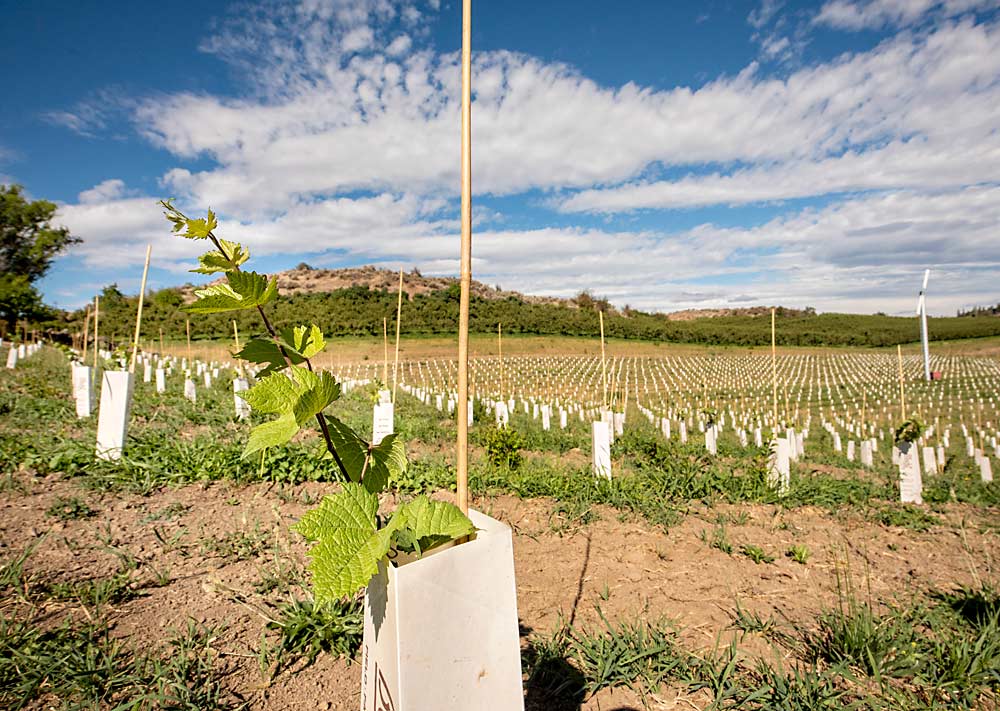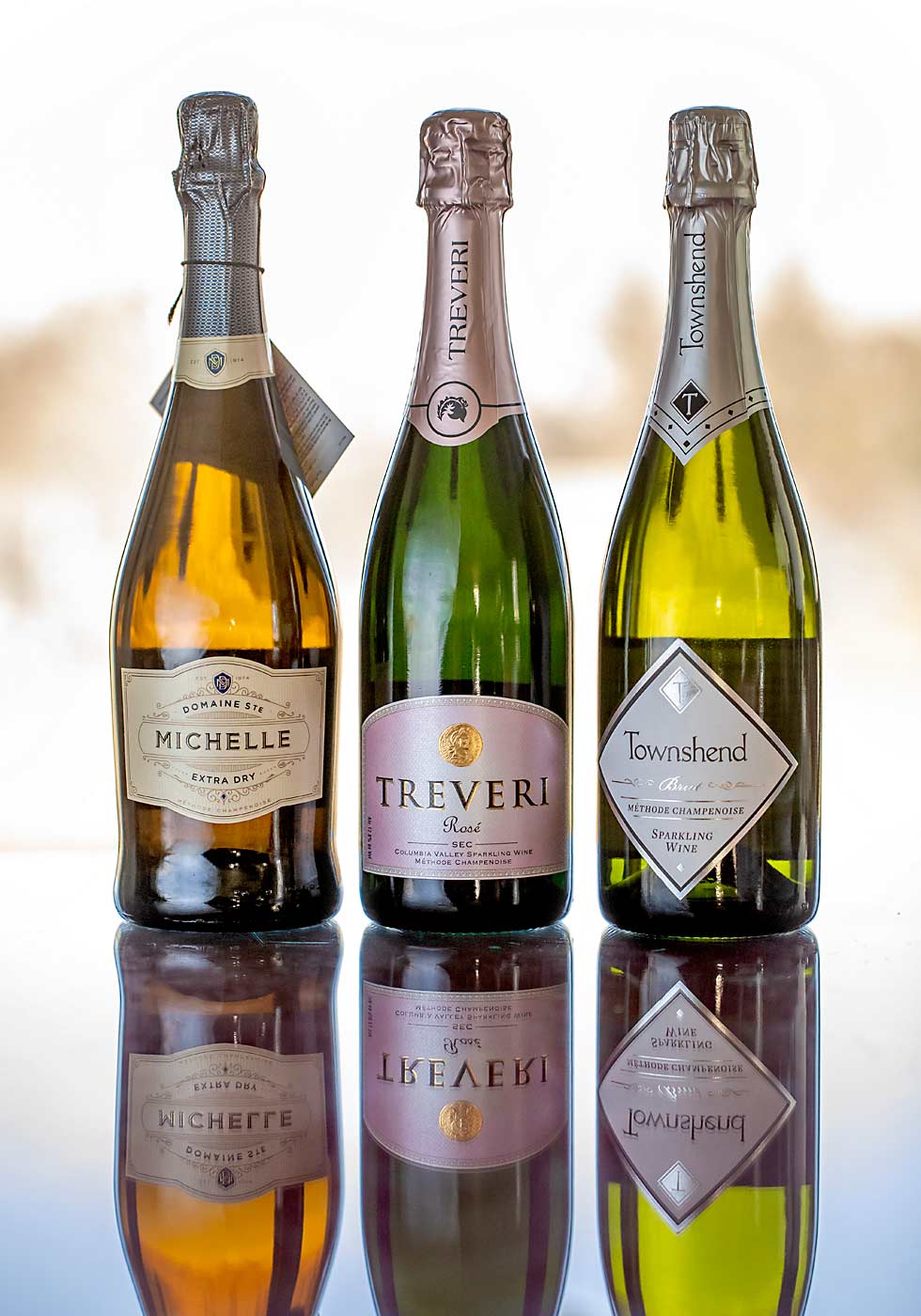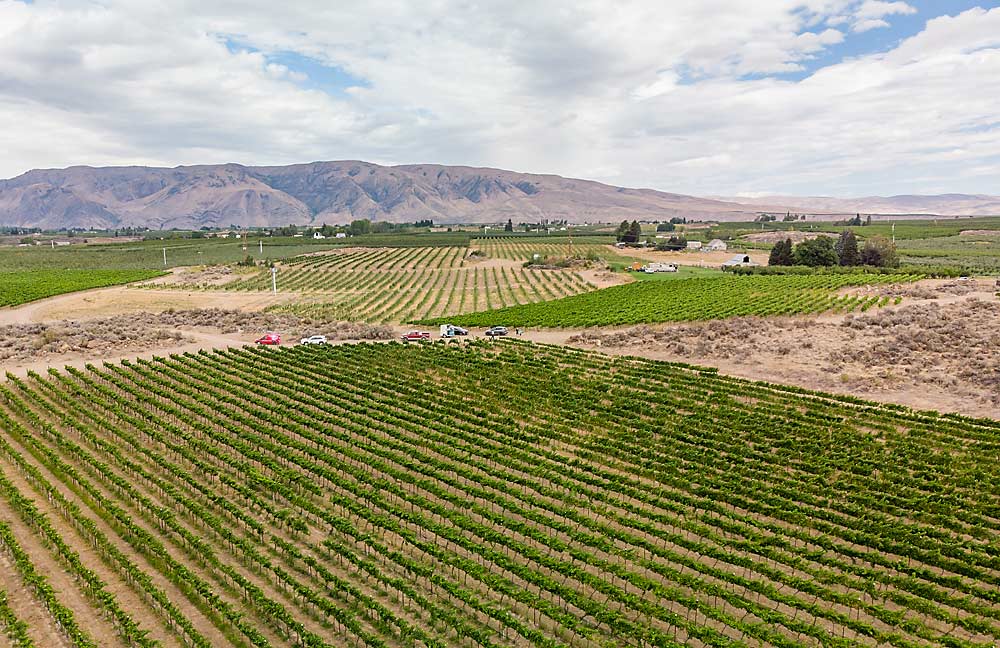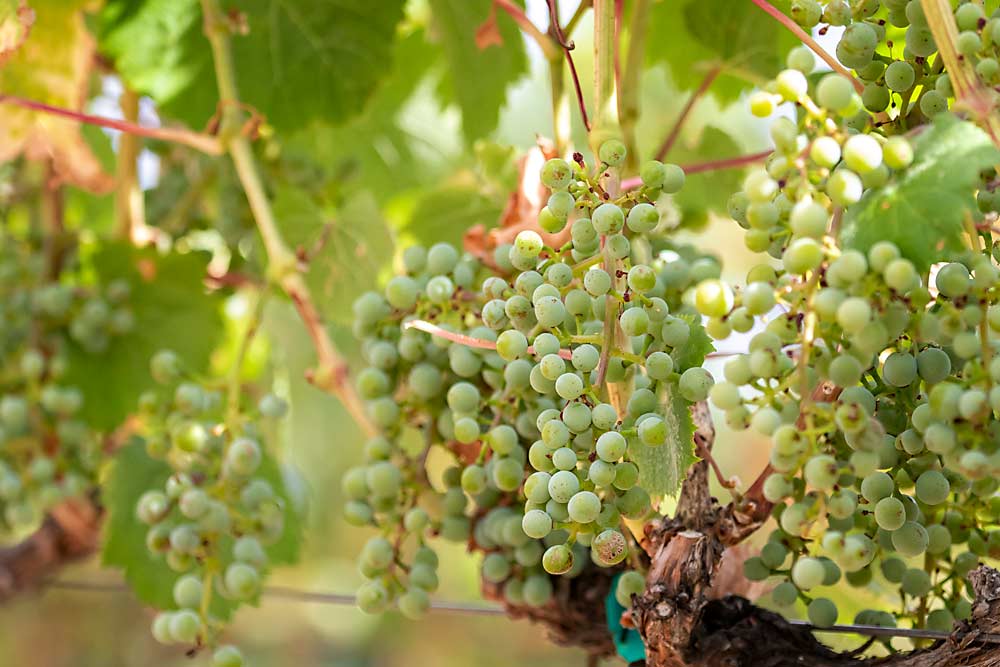
In Eastern Washington’s coolest American Viticultural Area, the hilly Naches Heights outside of Yakima, the wine grape footprint will double in the next few years, thanks to growing recognition that the climate makes for stellar sparkling wine.
In 2019, sparkling wine specialist Treveri Cellars bought an old apple orchard and replaced it with 25 acres of Pinot Noir, Chardonnay and Pinot Meunier — a traditional varietal used in Champagne. It’s the first phase of a planned expansion of 70 or so acres for the company that wants to invest in sparkling-specific plantings, said Christian Grieb, Treveri winemaker and vice president of sales.
Investing in new plantings stands out against a wider wine industry grappling with oversupply, but Grieb and others are excited about the growth opportunity for Washington’s young sparkling wine industry. While still wine sales have been relatively flat in recent years, sparkling wine consumption continues to grow, even as the pandemic decimated restaurant sales. It’s a category that can diversify wine portfolios, entice new consumers and create new markets for some vineyards, according to speakers at a session dedicated to sparkling wine during the Washington Winegrowers Association’s 2020 convention.

“Everyone loves bubbles,” said Flint Nelson, winemaker at Wit Cellars in Prosser, during a sparkling wine tasting. His sparkling Pinot Grigio, which is made with the inline carbonation method, has been “hugely popular” with tasting room customers.
“We’re at the very infancy of discovering what Washington sparkling wine is,” Grieb said during his Washington Winegrowers presentation. That’s despite the fact that his father, Juergen Grieb, has been making it for almost 40 years. The growing demand gives the wider industry an opportunity to craft itself a sparkling wine identity that can benefit all producers, he said.
For Treveri, which Juergen Grieb founded in 2010, investment in sparkling identity means doing something rare in the state: planting with the intent of producing sparkling wines.
They started with what they know customers want: an affordable luxury at $15 to $20 for sparkling wines produced in the traditional, bottle-fermented Champagne style.
“That takes getting smart in the vineyard and the winery to hit that price point,” Christian Grieb said. “You have to build this program from vine to bottle.”
Naches Heights
To that end, Treveri decided to build its program in Naches Heights in collaboration with Phil Cline, whose vineyard management company handles most of the AVA that, until recently, was comprised of about 40 acres.
“If they (Treveri) plant everything they bought, they are going to double what we have in the ground,” Cline said.
Cline, owner of Naches Heights Vineyard, and vineyard manager Abraham Gonzalez first began planting vineyards in the region in 2002, to diversify beyond the tree fruit business. Over the years, they’ve learned how to play up the region’s strengths, planting on north-facing slopes with great drainage.
“I learned from the apple business, don’t plant what everyone else is planting. Abraham and I are farming 35 different grapes in three AVAs,” Cline said. “Naches Heights is an amazing place for sparkling wine.”
The big acids and big fruit flavors Cline and Gonzalez produce caught Treveri’s attention in 2015, Grieb said.
“What makes Naches Heights special is the acidities are so different,” he said. A Riesling harvested at 20 Brix in the Yakima Valley might have a pH of 3.2, but a Riesling from Naches Heights at 20 Brix will be 2.9. “One of the things that plays to our advantage, especially in sparkling, is elevation.”
Treveri still buys that Riesling from Strand Vineyard, which, at 1,900 feet, stands 500 feet higher than Red Mountain, one of the state’s premier growing areas for bold Cabernet Sauvignon, Cline said. Naches Heights also accumulates about two-thirds of the heat units typical in a season at Red Mountain, resulting in very different wines from opposite sides of the Yakima Valley.

At Strand, he manages Tempranillo, Syrah, Malbec, Chardonnay, Riesling and Pinot Noir, rooted in a windblown volcanic soil — all the trunks leaning from wind exposure that keeps the vines compact. The Riesling has won awards, Cline said, but as an emerging wine region outside Washington’s mainstream, he had trouble finding buyers willing to pay what he thought the grapes were worth, until they found a home in Treveri’s bubbles.
The best sparkling grapes come from fruit that’s not “ripe ripe,” Cline said, so he’s learning a different style of viticulture.
“We can crop a little heavier, we don’t have to worry about getting to 22 or 23 Brix,” he said, citing targets around 4 tons an acre. He lets the canopy grow, well-watered, with less labor needed. “We don’t even have to leaf because I don’t need that color,” Cline said.
But Grieb points out that “ripeness” defined by sugars alone doesn’t tell the full story about fruit quality.
“You pick the grapes when they are ready for the wine you have in mind. That’s 24 Brix in a Cab program, but it could be 16 for sparkling that is the optimum ripeness for what you want to accomplish,” he said. “Acid and flavor are still extremely important when you are building a sparkling wine, and Naches Heights just offers something that’s a little more optimum than the rest of the state.”

Treveri planted its first vineyard in the AVA in 2019 but plans to eventually plant about 70 acres over the next few years, Grieb said. That’s in addition to the 8-acre vineyard at their winery in Wapato, just south of Yakima, and contracts with other growers across the Yakima Valley AVA. In the face of a warming climate, investing in cooler regions makes sense for the company’s future as well, he said.
Investing in their own vineyards gives Treveri the opportunity to explore sparkling-specific varietals and clones, Grieb said, and to test out some rootstocks. He planted several Chardonnay clones traditionally grown in the Champagne and Burgundy regions of France, along with the “Prosser clone” developed by Walter Clore. He also planted some German varietals, such as Kerner and Dornfelder.
“We’re at the cusp of this for Washington,” Grieb said.
A sparkling second life
Typically, in Washington, vineyards are not planted with sparkling wine programs in mind, said Dustin Tobin, viticulturist for Precept Wine, who also spoke at the Washington Winegrowers meeting. Instead, “sparkling is a natural part of life” for aging vineyards that can no longer reliably ripen high-end grapes, before they get replaced, he said.
“In sparkling, we want to grow big canopies and big grapes,” he said, aiming for 7 or 8 tons per acre of production that’s harvested between 15 and 17 Brix.
Tobin ticked off advantages: no shoot thinning; mechanization friendly; lower input costs means greater returns; and when you pick in late August, there’s little risk of cold damage. He recommended adjusting the irrigation plans to account for the generous canopy and machine harvesting during cooler nights to optimize freshness.

In contrast to the expensive management practices that high-end wines demand, Tobin called sparkling-focused viticulture sustainably profitable. “And profitability is what sustains us,” he said. “So, let’s maximize yields and revenue.”
Other Washington wineries take a more labor- and time-intensive approach to sparkling production. Karma Vineyards in the Lake Chelan AVA specializes in sparkling wines made in the traditional French style, retailing for $60–$70 per bottle. Winemaker Craig Mitrakul said, during the Washington Winegrowers panel, that he prefers to hand pick the fruit for whole cluster fermentations. Either way, he recommends harvesting at 17 to 21 Brix — Karma’s restaurant is named 18 Brix for this very reason.
Restaurants used to be the main venue for sparkling wine sales, but even as the pandemic pushed wineries of all sizes to pivot to retail, sparkling sales stayed strong, Grieb said.
Cline said he had several conversations with other winemakers interested in getting into sparkling production last fall. Watching sparkling find its home in Naches Heights is an exciting part of the evolution of Washington wine, he said.
Even after a year of pandemic uncertainty for his business and the wider industry, Grieb agreed.
“I’m still hot that Washington can and will find an identity on sparkling wine,” he said, “but it will take more of us doing it and not just using existing stock we have but rather, reimaging how we are making wine.” •
—by Kate Prengaman






Leave A Comment